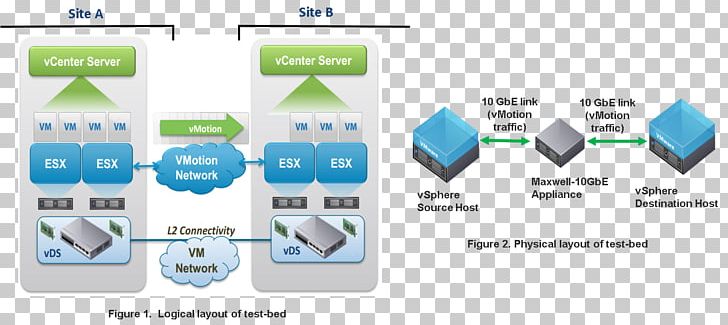
- VIRTUALMACHINE SPHERE HOW TO
- VIRTUALMACHINE SPHERE INSTALL
- VIRTUALMACHINE SPHERE PASSWORD
- VIRTUALMACHINE SPHERE DOWNLOAD
The above script should return the type of the host (ESX or Vsphere) and the names of the VM’s that are running on it: ~]$ chmod +x ~]$.
VIRTUALMACHINE SPHERE PASSWORD
Hostcon=vm_nnectToHost(host,user,pw)Įdit the host, user and password on line 6, 7 and 8 to match your installation. Now we can start with a basic Pysphere example that will try to connect to a Vsphere cluster and list the type of connection.Ĭreate host-info.py with the following contents: #!/usr/bin/python Vm.power_on() Test the connection to Vsphere Net = vm.get_property('net', from_cache=False)įor v in vm.get_property("devices").values():

Return "Succesfully created guest: "+guest_name

Return "Cannot create guest: "+task.get_error_message() Task_mor=host_con._proxy.CreateVM_Task(create_vm_request)._returnval New_host_mor.set_attribute_type(host_mor.get_attribute_type())Ĭreate_vm_t_element_this(new_vmf_mor)Ĭreate_vm_t_element_pool(new_rp_mor)Ĭreate_vm_t_element_host(new_host_mor) New_host_mor=create_vm_request.new_host(host_mor) New_rp_mor.set_attribute_type(rp_mor.get_attribute_type()) New_rp_mor=create_vm_request.new_pool(rp_mor) New_vmf_mor.set_attribute_type(vmf_mor.get_attribute_type()) New_vmf_mor=create_vm_request.new_this(vmf_mor) Nic_t_element_backing(nic_backing)Ĭreate_vm_t_element_config(config) Nic_backing = VI.ns0.VirtualEthernetCardNetworkBackingInfo_Def("nic_backing").pyclass() Nic_ctlr = VI.ns0.VirtualVmxnet3_Def("nic_ctlr").pyclass() If = "VirtualIDEController":Ĭd_ctrl = VI.ns0.VirtualCdrom_Def("cd_ctrl").pyclass()Ĭd_device_backing =VI.ns0.VirtualCdromIsoBackingInfo_Def("cd_device_backing").pyclass()ĭs_ref = cd_device_backing.new_datastore(ds_target)ĭs_ref.set_attribute_type(ds_target.get_attribute_type())Ĭd_device_t_element_datastore(ds_ref)Ĭd_device_t_element_fileName("%s %s" % (ds_vol_name,guest_iso))Ĭd_t_element_backing(cd_device_backing)Ĭd_t_element_controllerKey(ide_ctlr.get_element_key())ĭisk_t_element_fileOperation("create")ĭisk_ctlr=VI.ns0.VirtualDisk_Def("disk_ctlr").pyclass()ĭisk_backing=VI.ns0.VirtualDiskFlatVer2BackingInfo_Def("disk_backing").pyclass()ĭisk_t_element_fileName(ds_vol_name)ĭisk_t_element_diskMode("persistent")ĭisk_t_element_controllerKey(disk_ctrl_key)ĭisk_t_element_backing(disk_backing)ĭisk_t_element_capacityInKB(guest_disk_size) Scsi_ctrl=VI.ns0.ParaVirtualSCSIController_Def("scsi_ctrl").pyclass() Vm_t_element_vmPathName(ds_vol_name)Ĭt_element_memoryHotAddEnabled(True)Ĭt_element_cpuHotAddEnabled(True)

Return "Cannot find datastore: "+guest_dsĬreate_vm_request=VI.CreateVM_TaskRequestMsg() If d.Datastore.Accessible and (guest_ds and d.Datastore.Name=guest_ds) or (not guest_ds): H.set_attribute_type(host_mor.get_attribute_type())Ĭonfig_target=host_con._proxy.Quer圜onfigTarget(request)._returnvalĬonfig_option=host_con._proxy.Quer圜onfigOption(request)._returnval _t_attribute_type(cr_props.environmentBrowser._obj.get_attribute_type()) _this=request.new_this(cr_props.environmentBrowser._obj) Host_mor=įor h in p.Val.get_element_ManagedObjectReference(): Print "Cannot connect to host: "+host+" error message: "+errĭef createGuest(host_con,guest_dc,guest_host,guest_name,guest_ver,guest_mem,guest_cpu,guest_iso,guest_os,guest_disk_gb,guest_ds,guest_network,guest_enterbios):ĭc_list=Ĭr_mors=host_con._retrieve_properties_traversal(property_names=,from_node=hf_mor,obj_type='ComputeResource')
VIRTUALMACHINE SPHERE DOWNLOAD
Create a file vm_include.py and copy the following contents to the file or download it here: #!/usr/bin/pythonįrom pysphere import VIServer, VIProperty, MORTypesįrom pysphere.resources import VimService_services as VIĭef connectToHost(host,host_user,host_pw): The file contains function definitions related to Pysphere. In order to simplify my scripts that were using Pysphere, I created a file that can be included into other scripts. Running setup.py egg_info for package pysphere
VIRTUALMACHINE SPHERE INSTALL
The easiest way is to do this with PIP: ~]$ sudo yum install python-pipĭownloading pysphere-0.1.8.zip (538kB): 538kB downloaded In order to use pysphere, we need to install the Pysphere library.

The script uses pysphere, documentation can be found here: and the VMWare API, documentation can be found here: Preparation to run the script For example to enable hot add cpu and memory. In order to create a new VM on a fast and standardized way, I figured it would be a good idea to create a script that calls the VMWare API and executes the actions that I normally do manually via the GUI.
VIRTUALMACHINE SPHERE HOW TO
In this post, I will give some examples on how to easily create a new VM using Pysphere and the VMWare API. In order to be able to easily create and deploy new virtual machines, it can be a good idea to standardize and create VM’s using a (Python) script that calls the API. The VMWare API is very extensive and allows you to do almost all operations that are possible with VMWare using API calls.


 0 kommentar(er)
0 kommentar(er)
